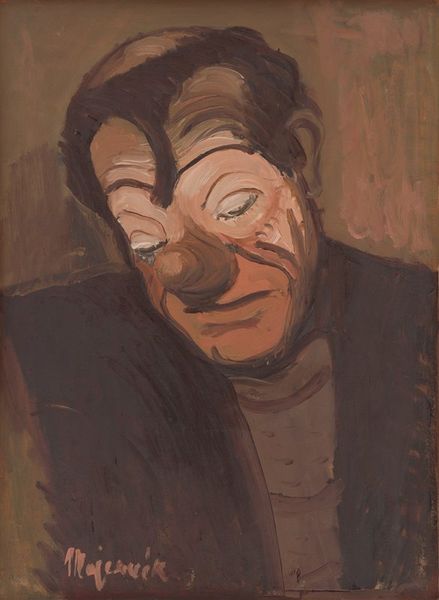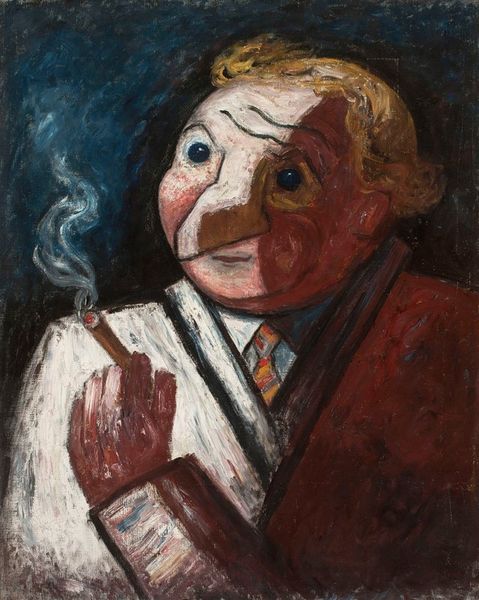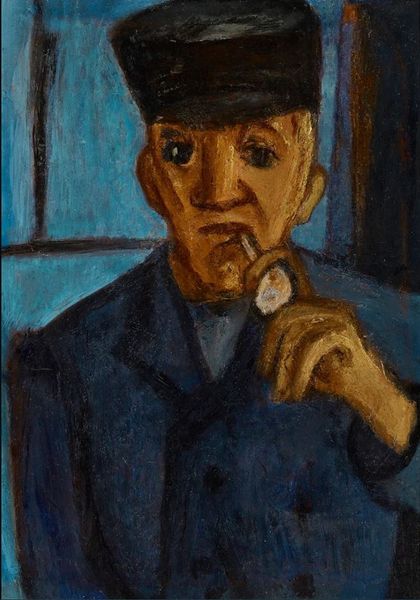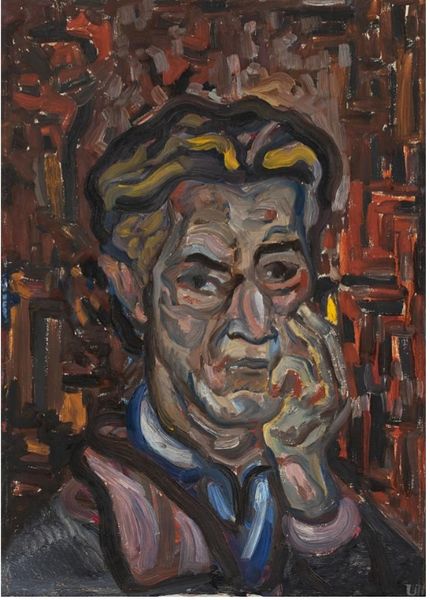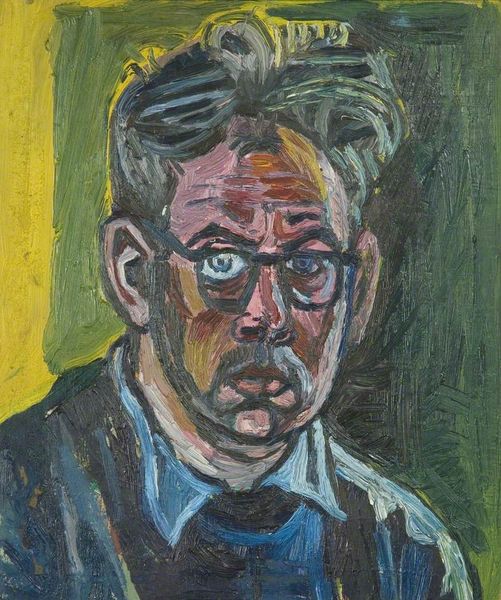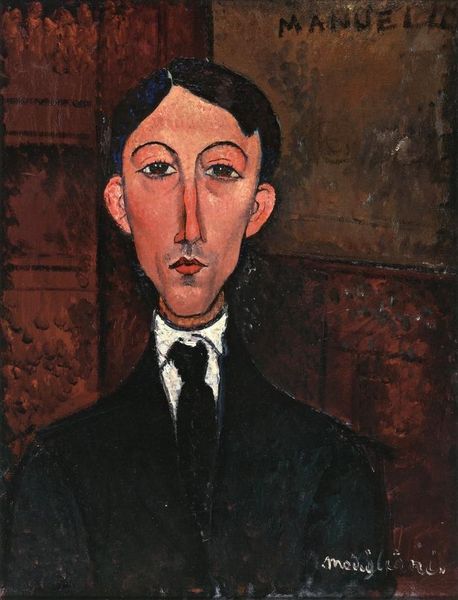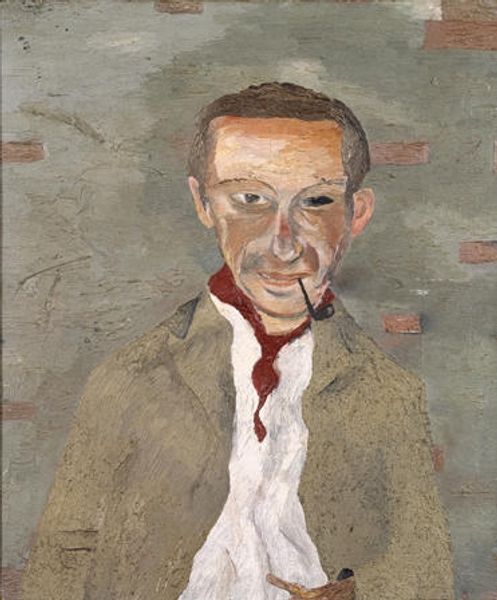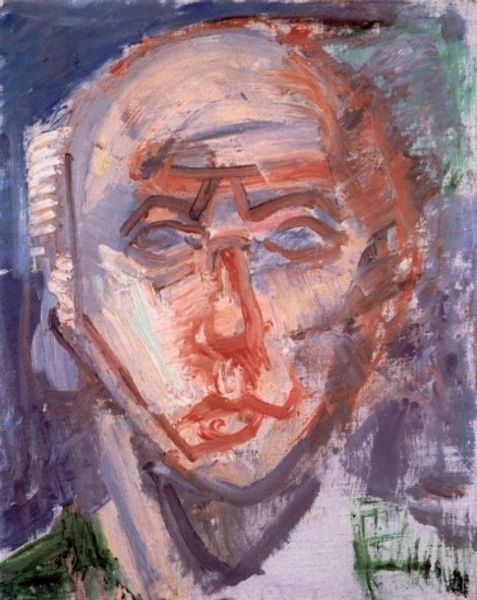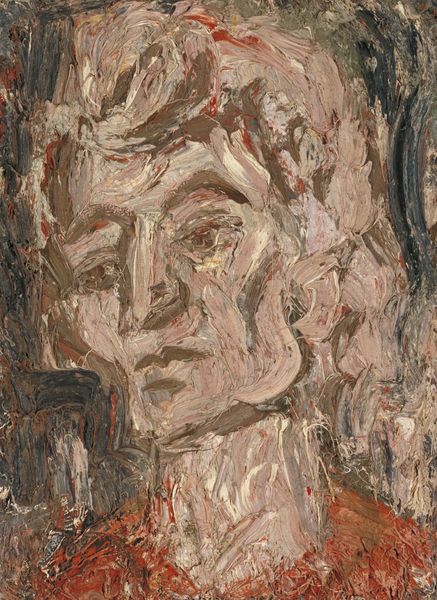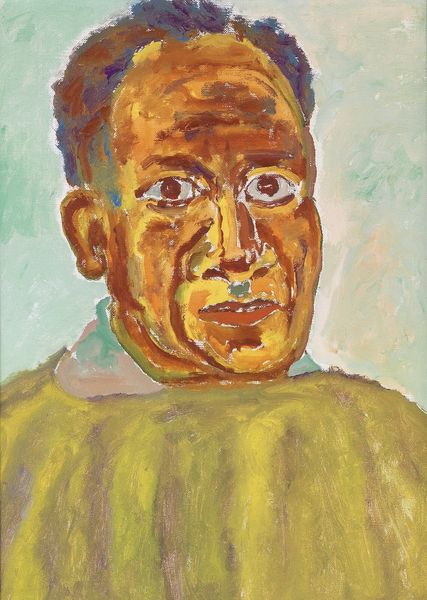
Copyright: Public Domain: Artvee
Editor: So, this is Cyprián Majerník’s "Crying Clown," painted in 1940, using oil paint. The exaggerated features and mournful expression are striking... How do you interpret this work? Curator: This portrait demands that we look beyond the surface, doesn't it? Majerník painted this during a period marked by political upheaval and personal turmoil in Europe. I see the 'clown' not as a simple entertainer, but as a symbol of the artist himself, or perhaps even broader, a stand-in for a population enduring hardship. The exaggerated, almost grotesque features become a mask, concealing deeper vulnerabilities. Consider how the grotesque became a tool for social and political critique in art, challenging dominant representations of beauty and normalcy. Does this shift your perception at all? Editor: It does! I was initially focused on the sadness in the expression, but knowing the historical context, it seems like more of a commentary. Were there other artists doing similar work? Curator: Absolutely. Think of the Expressionists and their unflinching depictions of suffering, artists who were processing collective anxiety. By rendering the figure as a 'clown,' Majerník perhaps found a subversive way to voice dissent. We can explore how identity is not a fixed attribute but a fluid performance shaped by social and historical circumstances, can’t we? Editor: It's amazing how much history and theory can unlock in a single painting. Curator: Precisely! Looking at the art, we uncover not just the aesthetic choices of an individual, but a visual record of societal tension and the quiet resistance embedded within the canvas.
Comments
No comments
Be the first to comment and join the conversation on the ultimate creative platform.
